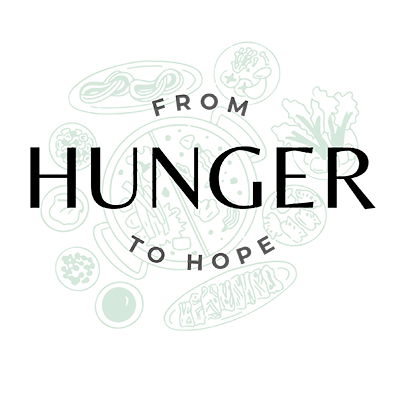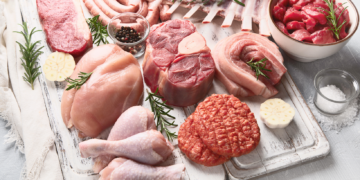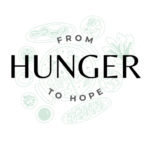Introduction
A grasshopper is an important part of a food web and many different organisms rely on the grasshoppers for their food source. In this article, we will explore what animals or organisms feed on grasshoppers in a food web. We will begin by exploring the role of the grasshopper in a food web, and then looking at what other animals or creatures may eat them. We’ll also look at how humans affect this process, both directly and indirectly. Finally, we’ll discuss some ways in which we can help protect the grasshopper population so that they can remain an important part of our shared ecology.
What is a Food Web?
A food web is composed of the various living organisms within an ecosystem, and their trophic relationships. A trophic relationship is the interaction between two different organisms in which one organism (known as the predator) eats another organism (known as the prey). In a food web, all predators and prey are linked together and create a complicated system for understanding how energy flows through the ecosystem. All creatures within an ecosystem, from bacteria to elephants, are dependent upon each other for survival.
When we explore a food web, we can discover which organisms eat which other organisms. For example, grasshoppers are typically considered part of the primary consumer level within a food web as they eat plants such as seeds and grasses. As such, there are numerous secondary or tertiary consumers that may predate upon and consume grasshoppers in order to survive. These could include small mammals such as reptiles and rodents like mice or squirrels; certain birds such as hawks or owls; amphibians including frogs or salamanders; and even arthropods like spiders or ants. Ultimately, any organism that feeds upon grasshoppers would be a part of the food web related to this primary consumer.
What Eats a Grasshopper?
Grasshoppers are a common member of the food web in many ecosystems, so it is important to know what animals rely on them as food. In a grassland ecosystem, there are several potential predators of grasshoppers, including birds, small mammals, reptiles and other insects. In this article, we will explore some of these animals and how they interact with grasshoppers in a food web.
Predators of Grasshoppers
Grasshoppers are an important part of the food web, as they provide a source of sustenance for other animals. Many different predators, from other insects to mammals, hunt and eat grasshoppers.
Insect predators: A variety of insects enjoy eating grasshoppers as part of their diet. These include spiders, praying mantises, beetles, dragonflies and robber flies. Some larger insects like cicadas and mantis may also eat smaller grasshoppers in some cases.
Birds: Birds such as roadrunners, crows, hawks and kestrels are quick hunters who look out for a good-sized meal — like a grasshopper — when it presents itself. Chickens also like to eat grasshoppers that they find in their coop or around their yard in the summer or early fall months when they are most active.
Mammals: Mammalian predators of grasshoppers include rabbits, shrews and various rodents. Some cats also view grasshoppers as a tasty treat when they can catch them quickly enough!
Reptiles: Lizards that live in close proximity to or on the ground look for flying or crawling bugs such as grasshoppers to feed on during the warmer days of spring and summer months. Toads also contain toxins that can kill an insect upon contact; some larger species may also try to consume a full-grown adult grasshopper as food if given the chance.
Parasites of Grasshoppers
Grasshoppers are frequently parasitized by various species of parasites. These can include fungi, dinoflagellates, protozoa, nematodes and endoparasitic wasps. The parasitic wasps are most common, laying eggs inside of the grasshopper host which consume the host from the inside before emerging from it as adults. Fungal infections can also be fatal to grasshoppers, often causing slow deaths as they stop eating and finally succumb to fatigue or death by starvation. Most other parasites take advantage of injured or weakened grasshoppers and rarely cause long-term damage to a healthy population.
Other Organisms That Feed on Grasshoppers
Grasshoppers are important members of terrestrial food webs and provide nourishment for a variety of other organisms. Due to their size and appetites, grasshoppers are eaten by birds, mammals, amphibians, reptiles and invertebrates. Some of the most common predators that feed on grasshoppers are listed below.
Birds: A wide variety of birds include grasshoppers in their diets including songbirds, eagles, hawks and falcons.
Mammals: Small mammals such as shrews, moles and rats feed on grasshoppers when given the opportunity. Raccoons also rely on grasshoppers as an important food source during summer months.
Amphibians: Toads will wait for unsuspecting insects close to water sources before latching onto their prey with their sticky tongues. Grasshoppers make an easy meal for hungry toads who can detect them from far away using hearing sensitive hairs on their heads.
Reptiles: Skinks and some types of lizards feast upon these crunchy inverts like a devious buffet line coupled with lots of chasing! Snakes too have been known to grab them unawares as an added bonus snack when out hunting mice for instance!
Invertebrates: Other invertebrates like spiders and ants feast upon hapless hoppers felled by predators or left wandering too close to the wrong type of bugs! Some species of beetles latch onto them while they’re still alive then consume the prey bit by bit while burying them underground during some solitary feasting fun!
Conclusion
A grasshopper is an essential part of many food webs. It serves as prey to a wide variety of predators, including birds, reptiles, amphibians, and other small mammals. The grasshopper is also a source of food for larger predators like bears and spiders. Additionally, fungi commonly parasitize the grasshopper and may be its primary non-predatory natural enemy.
In addition to the predatory elements associated with a grasshopper’s place in a food web, it also has an important role in plant growth and health. Grasshoppers consume large amounts of foliage from plants that are their preferred diet or whose terrain they inhabit. As part of its natural cycle within the food web, the feces left bt hese animals aids in the active decomposition process that returns nutrients back into soil for new plant growth and development.
Altogether, by understanding how relationships between organisms affect each other on both sides of the argument, we can better assess how various components of a food web are essential to maintaining balance in nature’s delicate environment.












